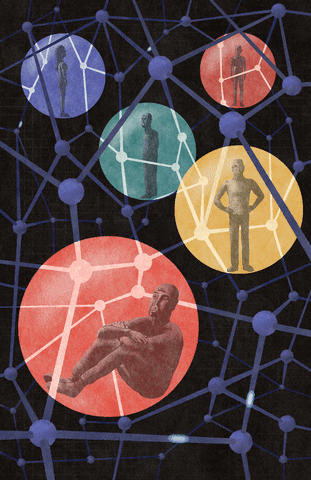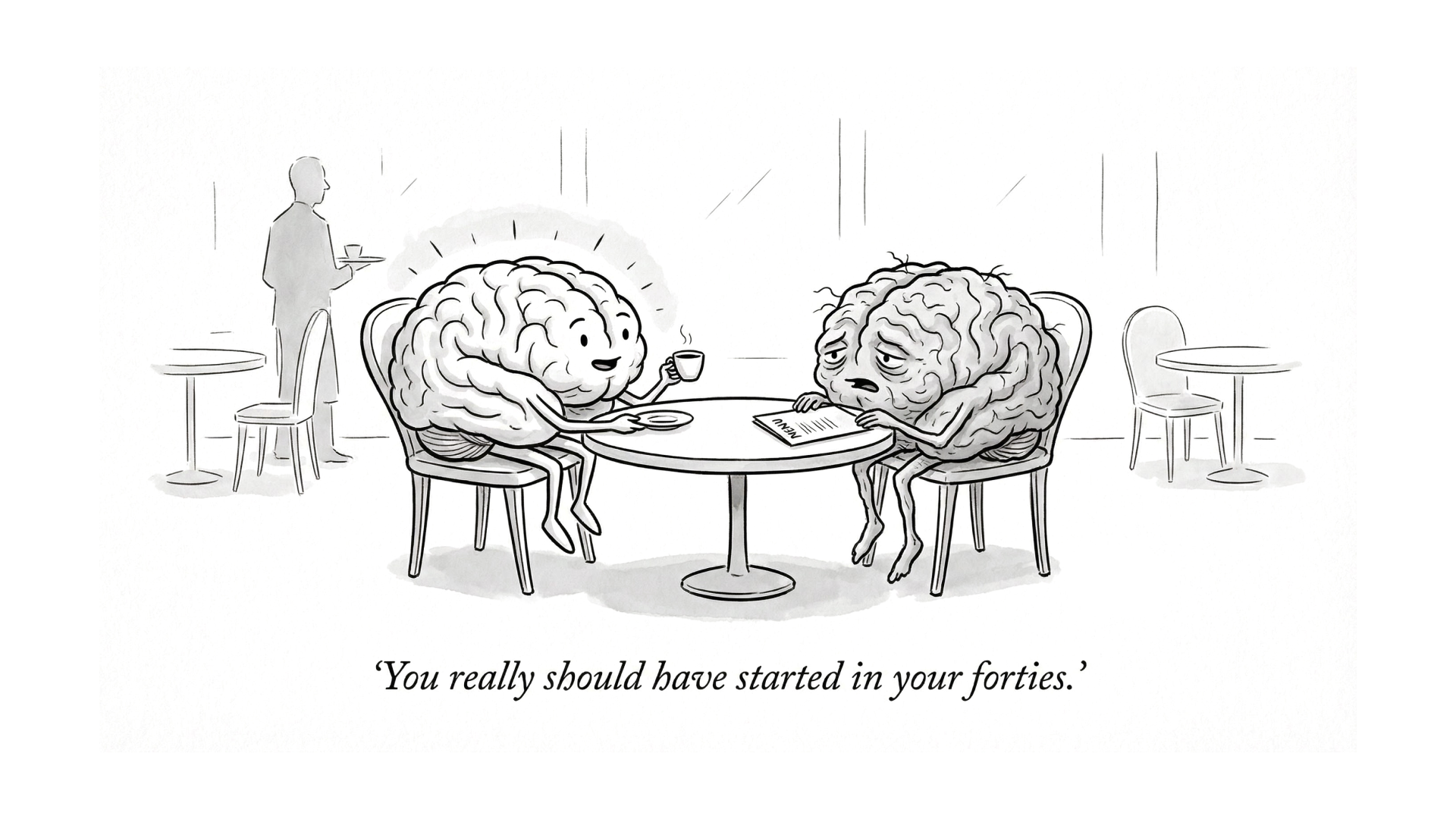- Remove the current class from the content27_link item as Webflows native current state will automatically be applied.
- To add interactions which automatically expand and collapse sections in the table of contents select the content27_h-trigger element, add an element trigger and select Mouse click (tap)
- For the 1st click select the custom animation Content 27 table of contents [Expand] and for the 2nd click select the custom animation Content 27 table of contents [Collapse].
- In the Trigger Settings, deselect all checkboxes other than Desktop and above. This disables the interaction on tablet and below to prevent bugs when scrolling.
9 tips from design and innovation experts from Neurable’s panel with Levels Health, Oura Ring, iRobot, Potato, and Studio Freight.
Hint: innovation takeaways are less technical than you think.
When building the future it’s easy to get carried away with ideas straight out of a science fiction novel—mind-reading devices, self-driving cars, personal dancing robots among other hyper-technical, futuristic-seeming technological advancements. At Neurable’s recent event, we invited those building the future to share their insights on what makes a better, brighter (and more practical) future.
With experts like Theresa Guarerra, product manager at iRobot, Patrick Torres, Creative Director/Founder at Studio Freight, Joseph Pacheco, Design Lead at Potato, Janne Kukka, Senior UX Designer at Oura Ring, and David Flinner, Co-founder of Levels Health, we’re able to get a first look at what it takes.
Curious to do your own homework? Watch the recording
. Here are our key takeaways from the event:
1. We want information but not ALL the information

Have you ever been stuck in a bad group text? We’ve all been there (and it's an experience that no one should be subjected to.) Devices shouldn’t mimic this experience. When you require constant interaction, the device can become more of a nuisance than it’s worth. Wearable devices should operate behind the scenes and be able to show insights at the end of the day. In Guarerra’s words, "We should get all the insights but shouldn't feel like we are getting all the insights.”
2. Be very mindful of where the data is going.

When data is the defining piece, it’s important to make sure the data is treated well. “My hope for the future of wearables is that it won’t be combined with targeted ads based on your data,” said Torres. If advertising enters the game, it feels like a slippery slope to a whole other questionably-ethical realm in terms of targeted advertising. Limitations and boundaries should be set between data sets derived from wearable devices and advertisers—an individual shouldn’t be seeing an uptick in weight loss ads because they used a health monitoring app.
3. Own It, It’s Yours!

There have been (rightfully so) many horror stories that make people question their control over data. Data has been used, bought, sold, and manipulated in ways that it benefits corporations far more than customers, and that needs to change. Individuals should be empowered by their data and feel a sense of trust that customer benefit is the first priority. Honesty and integrity should rank supreme, “it’s not our data, it’s your data,” Flinner said.
4. You can’t get rid of your doctor just yet.

There’s nothing worse than walking out of a doctor’s appointment more confused than when you walked in. It's unlikely that wearables will be replacing doctors regardless of all the insights and analytics available to users. "Wearable devices can create awareness which can steer a more focused conversation with the user’s healthcare providers,” Guarerra said. The insights can help identify underlying conditions, help understand if your body is acting differently, and offer more concrete evidence to show healthcare providers what’s happening. Wearables could provide that extra insight that can help make that 15 minute check up worth it.
5. Help us, help you!

It seems simple enough to make things that are useful for the user. When creating wearable products, step into the user’s shoes and try to understand what exactly they need and how to do that without disrupting their everyday lifestyle. Kukka from Oura Ring emphasized the importance of taking your community into consideration when building products, especially wearable products.
6. Gentle nudge to make them budge.

Nobody likes being told what to do, rather a friendly nudge in the right direction is more appreciated. There’s a large difference between notifying and annoying the heck out of your users. Pacheco said, “The entire purpose of these wearables should be to help users improve habits through gentle nudges rather than aggressively notify users to make a change.” Kindness is always key, isn’t it?
7. Everyone needs to get it, not just the person who owns the device.

Have you ever looked at a graph and asked yourself “What am I looking at?” Flinner said, “Companies need to focus on creating interfaces that are accessible, easy to understand, and concise for not only the users but also the providers that will look at the data in the future.” Data or insights from a wearable device may make perfect sense to the customer, but the same information may be confusing to a doctor.
8. Making more by showing less.

The future consists of building more but showing less. Wearable technology will integrate sensors into everyday items. This maximizes value while minimizing disruption, but we have only one body, and we can’t adjust our behavior according to each device’s recommendations. What’s the solution? “Customers don't want to take care of more devices, so the end goal of all wearable devices should be to fit into people's everyday lives,” Guarerra said. A great modern-day example is the Oura Ring, which is a ring transformed to take insights and give feedback on everyday activities.
9. This isn’t our first rodeo.

History repeats itself, but until then it teaches. Pacheco from Potato explained, “We have to keep learning from history how to design and innovate forward, so that we are creating devices that best fit our evolving lifestyles.” Just a few years ago, conference calls were the norm with the occasional Skype video call. Now Zoom is the standard to the point that thousands of people in this pandemic have created integrations or products to match people’s way of living.
We can’t guess what will happen tomorrow or even in a couple years, but we can see what technologies are in development for the devices of tomorrow. Bytalking to product leaders like our speakers, we are able to get a better idea of what we can expect. You can watch the full event here, and be sure to connect with us on Discord to talk more about wearables!
2 Distraction Stroop Tasks experiment: The Stroop Effect (also known as cognitive interference) is a psychological phenomenon describing the difficulty people have naming a color when it's used to spell the name of a different color. During each trial of this experiment, we flashed the words “Red” or “Yellow” on a screen. Participants were asked to respond to the color of the words and ignore their meaning by pressing four keys on the keyboard –– “D”, “F”, “J”, and “K,” -- which were mapped to “Red,” “Green,” “Blue,” and “Yellow” colors, respectively. Trials in the Stroop task were categorized into congruent, when the text content matched the text color (e.g. Red), and incongruent, when the text content did not match the text color (e.g., Red). The incongruent case was counter-intuitive and more difficult. We expected to see lower accuracy, higher response times, and a drop in Alpha band power in incongruent trials. To mimic the chaotic distraction environment of in-person office life, we added an additional layer of complexity by floating the words on different visual backgrounds (a calm river, a roller coaster, a calm beach, and a busy marketplace). Both the behavioral and neural data we collected showed consistently different results in incongruent tasks, such as longer reaction times and lower Alpha waves, particularly when the words appeared on top of the marketplace background, the most distracting scene.
Interruption by Notification: It’s widely known that push notifications decrease focus level. In our three Interruption by Notification experiments, participants performed the Stroop Tasks, above, with and without push notifications, which consisted of a sound played at random time followed by a prompt to complete an activity. Our behavioral analysis and focus metrics showed that, on average, participants presented slower reaction times and were less accurate during blocks of time with distractions compared to those without them.




.png)